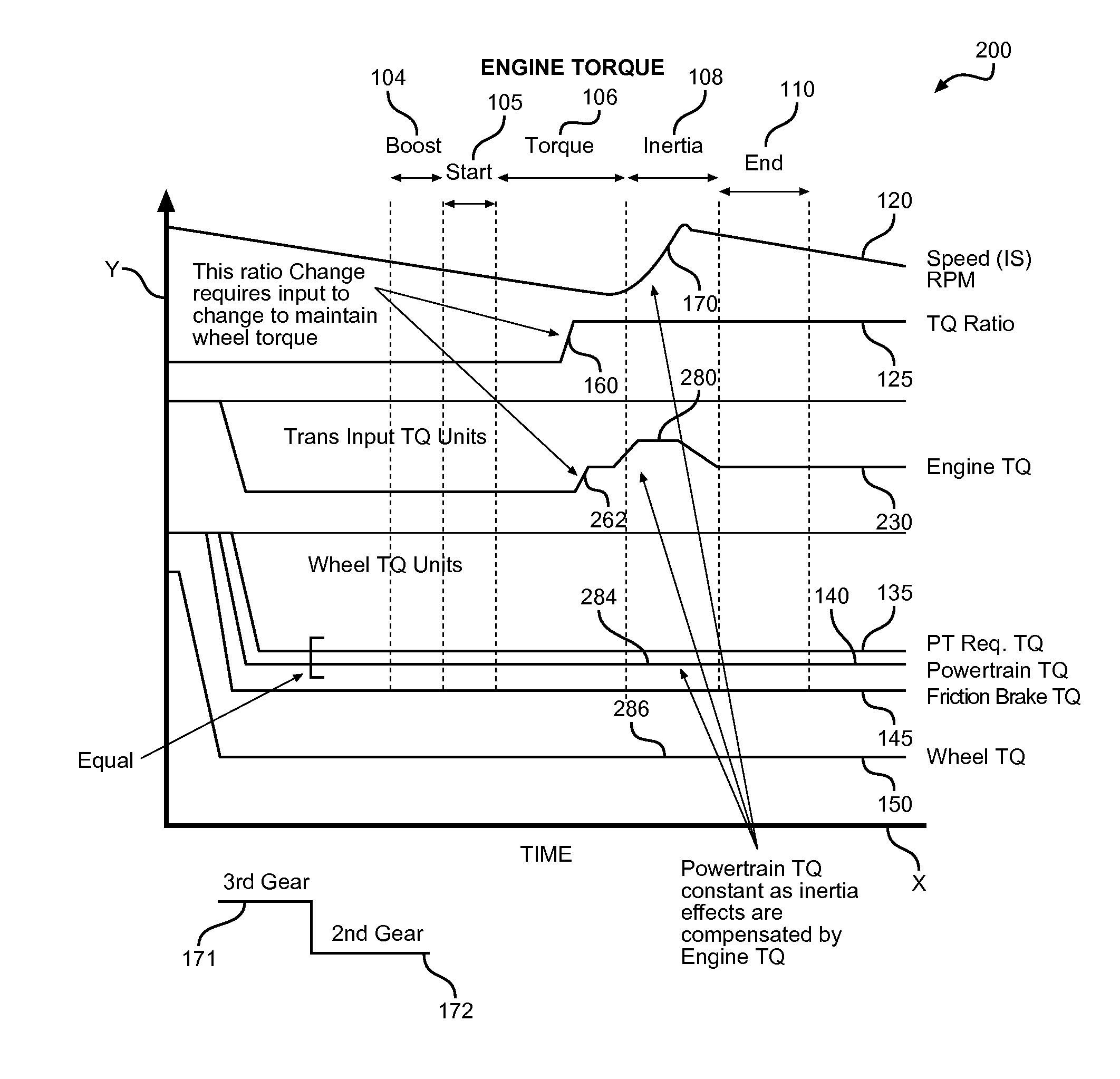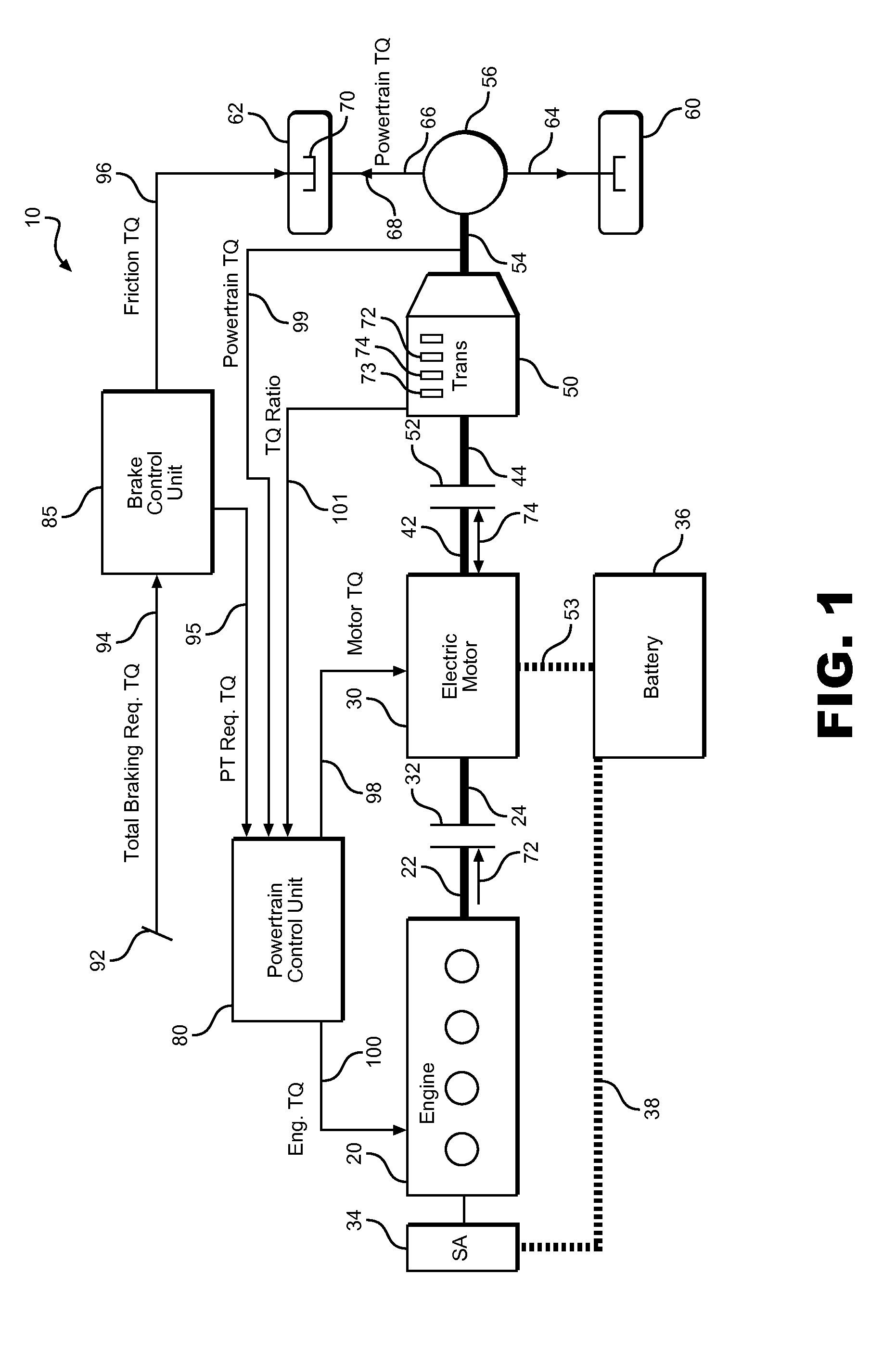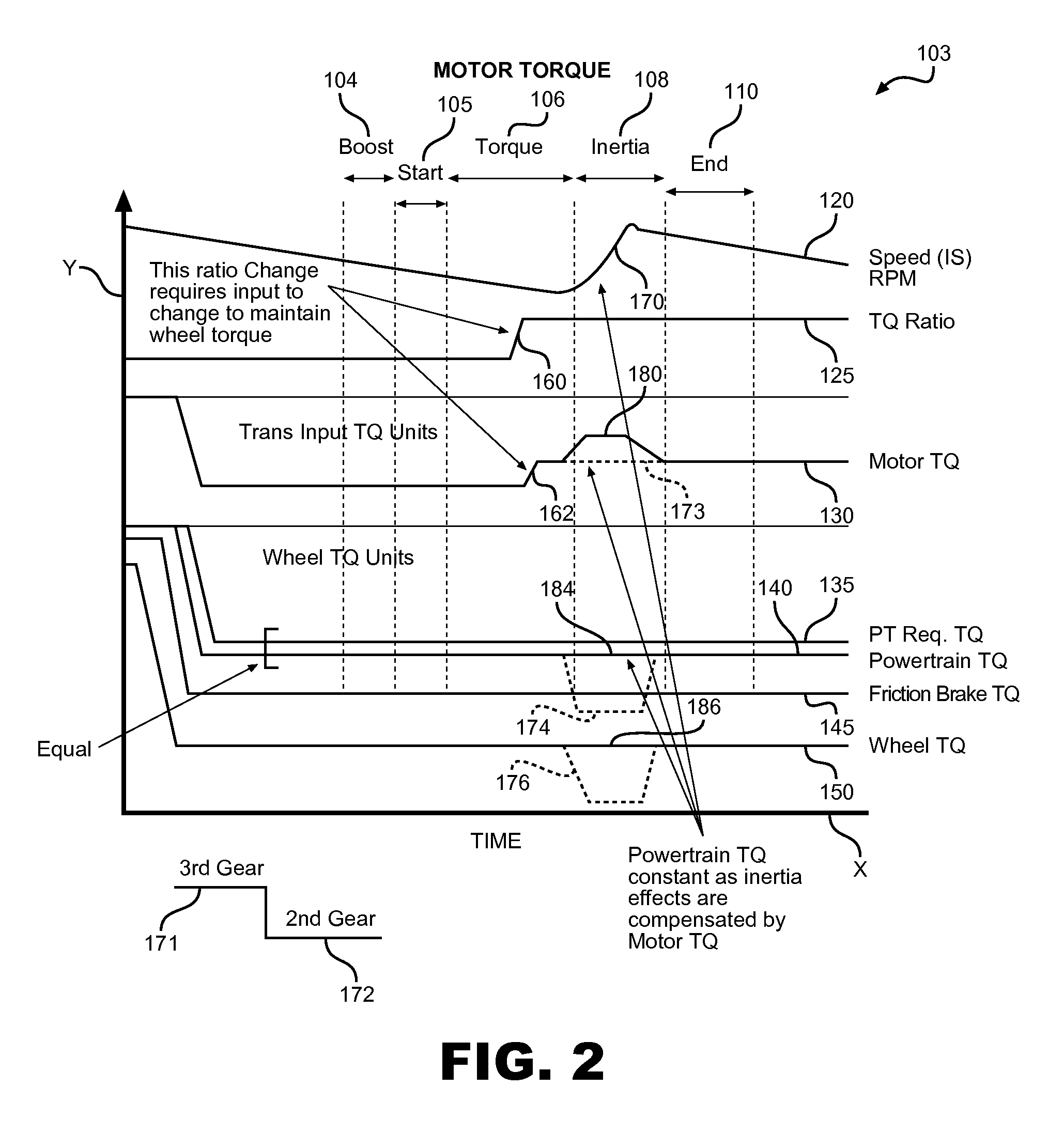Torque modulation in a hybrid vehicle downshift during regenerative braking
a hybrid vehicle and powertrain technology, applied in the field of hybrid vehicle powertrains, can solve the problems of significant negative torque at the input of the transmission, shift shock, and waste of energy, and achieve the effect of reducing shift shock
- Summary
- Abstract
- Description
- Claims
- Application Information
AI Technical Summary
Benefits of technology
Problems solved by technology
Method used
Image
Examples
Embodiment Construction
[0017]With initial reference to FIG. 1, there is schematically shown a hybrid electric vehicle powertrain system 10 for a hybrid electric vehicle. As depicted, an internal combustion engine 20 has an output shaft 22 connected to an input shaft 24 of an electric motor 30 through an engine clutch 32. Internal combustion engine 20 is also connected to a starter motor 34 used to start engine 20. Starter motor 34 is also connected to a battery 36 through wiring 38 so as to be also used as a generator to produce electric energy that is stored in a battery 36. Electric motor 30 has an output shaft 42 that is connected to an input shaft 44 of an automatic transmission 50 through a motor clutch 52. Electric motor 30 is also linked to battery 36 through a connecting wiring 53. Transmission 50 includes multiple gear ratios and is connected to a drive shaft 54 that, in-turn, is connected to a differential 56. Left and right drive wheels 60, 62 are connected to differential 56 through left and r...
PUM
 Login to View More
Login to View More Abstract
Description
Claims
Application Information
 Login to View More
Login to View More - R&D
- Intellectual Property
- Life Sciences
- Materials
- Tech Scout
- Unparalleled Data Quality
- Higher Quality Content
- 60% Fewer Hallucinations
Browse by: Latest US Patents, China's latest patents, Technical Efficacy Thesaurus, Application Domain, Technology Topic, Popular Technical Reports.
© 2025 PatSnap. All rights reserved.Legal|Privacy policy|Modern Slavery Act Transparency Statement|Sitemap|About US| Contact US: help@patsnap.com



